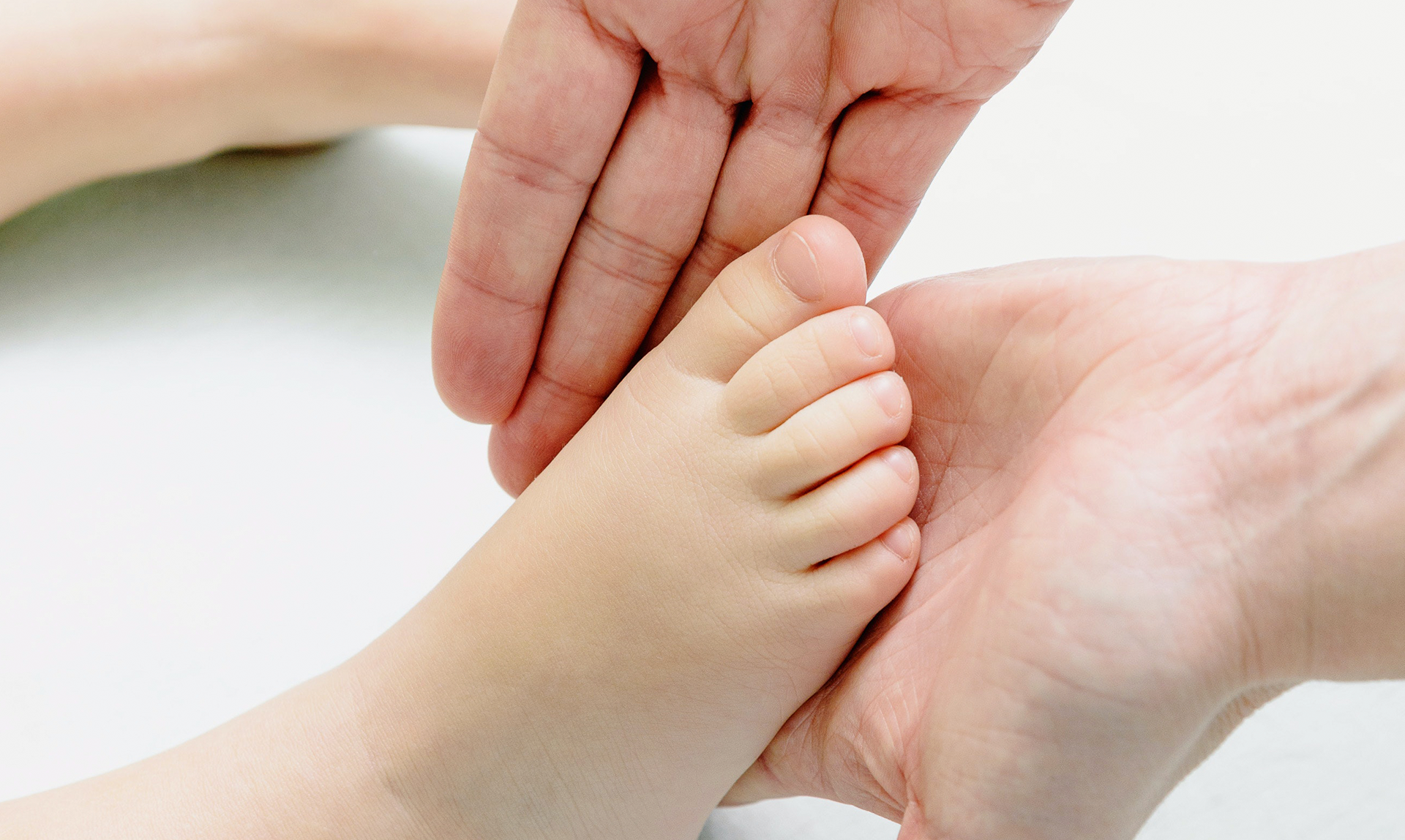Retronychia
The term ‘retronychia’ (formed by ‘retro-‘ from Latin <and> ‘-onichia’, from Greek) <nail>refers to a backward growth of the nail. The nail becomes trapped in the proximal nail fold, causing inflammation, pain, and arrest of nail growth, and nails are growing under the proximal nail fold.(1,2) (1,2)
It is one of the most neglected nail pathologies despite being a common condition. It is common in middle-aged women, and in 84% of cases it occurs unilaterally(3).
There is usually a previous trauma that causes a transitory stop in the growth of the nail from the matrix. When it is restarted, the retained nail plate prevents the proper growth of the new nail plate, leaving it stuck in place. Other causal agents to be mentioned are: repeated micro-traumatisms (inappropriate footwear, sports, or mechanical alterations of the foot), systemic processes (osteoarthritis, anorexia, thrombophlebitis), hereditary causes, drugs, etc (3).

The diagnosis is mainly clinical: nail growth is arrested, accompanied by persistent painful inflammation of the proximal nail fold. Depending on the stage of evolution, two phases can be identified: (3,4,5)
- – Initial Phase: Pain, paronychia, exudate in proximal fold and xanthonychia.
- – Secondary Phase: Previous symptoms more intenseand evident in addition to nail dystrophy, distal onycholysis and shortening of the nail bed.
It is not uncommon to confusethis type of pathology with others, which is why it is important to make a good differential diagnosis with cases such as paronychia, onychocryptosis, arthritic processes or nail involvement secondary to medication (cyclosporine, anti-EGFR). (3) (3)
Nail growth in children is similar to that of adults, approximately 1-1.5 mm per month for toenails and up to 3 mm for fingernails. In the neonatal stage and during adolescence the rate of nail growth triples. This is decisive for the development of acquired diseases affecting the nail plate, which often require complete renewal of the nail plate. (6) (6)
Thetherapeutic approach to this type of pathology will depend on the stage of evolution of the disease. The application of potent corticosteroids in occlusive dressings in the proximal fold for 4-8 weeks is a conservative treatment option in the initial stages when the patient refuses surgery. After 10 weeks, if there is no improvement, total avulsion of the nail is recommended (7,8).
Oncetreatment has been completed, it is equally important and necessary to monitor nail growth, as there is a recurrence rate of 13-33% of cases, with the possibility of permanent nail dystrophy (4,5).
Bibliography
-
Berker DA, Rendall JR. Retronychia-Proximal ingrowing nail. J Eur Acad Dermatol Venereol. 1999;12:S126
-
Berker DA, Richert B, Duhard E, Piraccini BM, André J, Baran R. Retronychia: proximal ingrowing of the nail plate. J Am Acad Dermatol. 2008;58(6):978-83
-
Martín Adrados A, Torrelo A. Retroniquia: una patología poco conocida. Rev Pediatr Aten Primaria. Supl. 2022;(31): [en prensa].
-
Gerard E,Prevezas C, Doutre MS, Beylot-Barry M, Cogrel O. Risk factors, clinical variants and therautic outcome of retronychia: a retrospective study of 18 patients. Eur J Dermatol. 2016;26(4):377-81
-
Litaiem N, Drissi H, Zeglaoui F, Khachemoune A. Retronychia of the toenails: a review with emphasis of pathogenesis, new diagnostic and management trends. Arch Dermatol Res. 2019;311(7):505-12
-
Hernández Martín A. Patología ungueal en la edad pediátrica. En: AEPap (ed.). Congreso de Actualización Pediatría 2020. Madrid: Lúa Ediciones 3.0; 2020. p. 189-194
-
Lencastre A, Lorizzo M, Caucanas M, Cunha N,Trakatelli MG, Zaara I et al. Topical steroids for the treatment of retronychia. J Eur Acad Dermatol Venereol. 2019;33(9):e320-2.
-
Laird ME, Lo Sicco KI, Rich P.Conservative treatment of the retronychia:a retrospective study of 25 patients.Dermatol Surg. 2019;45(4):614-6




